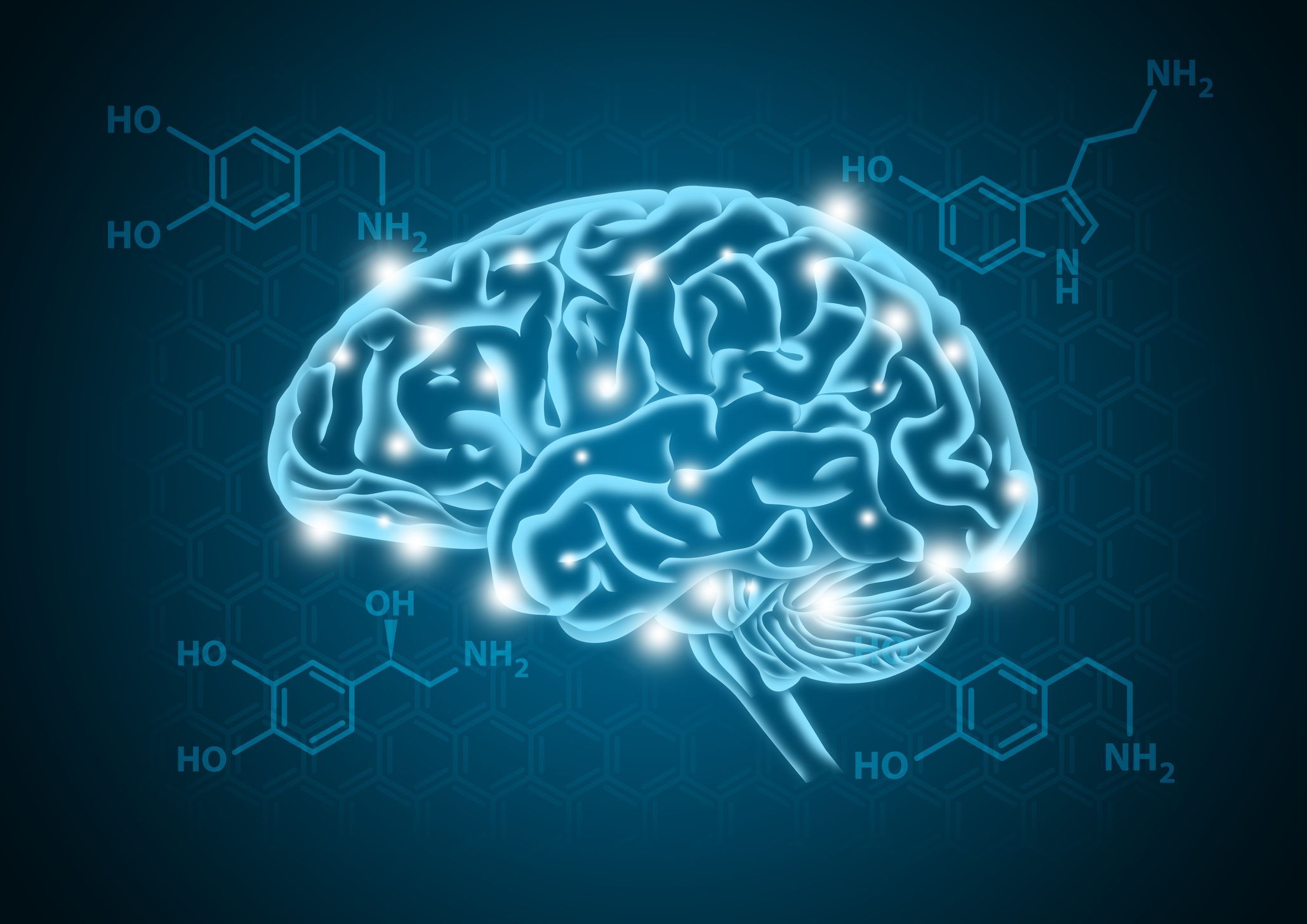Internet Addiction, Texting Addiction, Screen Addiction, and Online Gaming Addiction are all phrases we hear in modern times but are they really a thing? Well, yes they are, and no they are not. What?! Keep on reading to see why this is not a clear-cut answer.
First off, let’s talk about dopamine because it currently has a lot of media attention due to its association with possible screen and gaming addiction.
Estimated reading time: 6 minutes
What Causes Addiction? And What Is Dopamine?
- Dopamine is one of many neurotransmitters in the brain. A neurotransmitter is a substance that moves information around the brain. This information movement leads to a person’s conscious reactions to the world around her through behavioral and emotional responses, as well as a person’s subconscious body systems’ functions and calibrations such as heart rate, reflexes, and breathing rate.
- Dopamine has been identified as an important part in many conscious and subconscious brain functions such as attention, thinking, movement, motivation, mood, cardiovascular tasks, and sleeping.
- Dopamine, historically, was thought to be increased in the brain by the experience of a perceived pleasurable event and thus was called the “Pleasure Drug.” However, more recent research indicates increased levels of dopamine are actually created by the expectation of a perceived pleasurable event.
- Because dopamine levels increase during the EXPECTATION of a pleasurable event, it is not actually the pleasure creator or the pleasure drug. Rather, according to David J. Ley, Ph.D., clinical psychologist, in his article No, Dopamine is Not Addictive “…the pleasure and hedonic or euphoria feeling comes from opioids in the brain, neurochemicals that increase pleasure and deaden pain. Dopamine’s role in pleasure and reward is that it helps your brain to recognize “incentive salience.” This means that it’s like a little red flag to your brain, saying “hey, pay attention, this is about to feel good, and you want to remember this, so you can do it again.'”
- The brain LOVES pleasure (AKA - WE LOVE pleasure!). It's apparent what motivates and keeps us going. Dopamine is part of a neurotransmitter cocktail that allows the brain to “feel pleasure” and this is what links dopamine to addiction.
So dopamine creates the pleasure experience that is associated with addiction. However, addiction requires other components as well. Some common contributing factors are family history, a lack of self-calming skills, inadequate coping skills, negative thinking habits, avoidance of pain, anxiety or depression, feelings of isolation and a longing for connection.
Related reading: "Redirecting Teen Defiance into Healthy Self-Esteem."
 What Is Addiction? And How to Identify the Symptoms of Addiction
What Is Addiction? And How to Identify the Symptoms of Addiction
Now, let’s talk about addiction. Addiction is a complicated experience process that is characterized by much more than increased dopamine.
- Addiction’s fundamental characteristic is that the reward attained from the addictive behavior continues to be sought and acted upon (over and over and over) even though there are highly damaging consequences from that behavior.
- Psychology Today gives these examples of what addiction symptoms can look like; keeping in mind, that the more symptoms present, the more likely there is an addiction:
- The substance or activity is used in larger amounts or for a longer period of time than was intended.
- There is a desire to cut down on use or unsuccessful efforts to do so.
- Pursuit of the substance or activity, or recovery from its use, consumes a significant amount of time.
- There is a craving or strong desire to use the substance or activity.
- Use of the substance or activity disrupts role obligations at work, school, or home.
- Use of the substance or activity continues despite the social or interpersonal problems it causes.
- Participation in important social, work or recreational activities drops or stops.
- Use occurs in situations where it is physically risky.
- Screen use continues despite knowing it is causing or exacerbating physical or psychological problems.
- Tolerance occurs, indicated either by a need for markedly increased amounts of the substance to achieve the desired effect or a markedly diminished effect of the same amount of substance.
- Withdrawal occurs, manifesting either in the presence of physiological withdrawal symptoms or the taking of a related substance to block them.
- Addiction diagnosis is complicated and involves a trained expert.
 One pointer toward the rising problem of screen addiction came to light in mid-2018. In the face of significant controversy, the World Health Organization (WHO), added Gaming Disorder to its 11th Revision of the International Classification of Diseases (ICD-11).
One pointer toward the rising problem of screen addiction came to light in mid-2018. In the face of significant controversy, the World Health Organization (WHO), added Gaming Disorder to its 11th Revision of the International Classification of Diseases (ICD-11).
Gaming Disorder is defined in the ICD-11 as a pattern of gaming behavior (“digital-gaming” or “video-gaming”) characterized by impaired control over gaming, increasing priority given to gaming over other activities to the extent that gaming takes precedence over other interests and daily activities, and continuation or escalation of gaming despite the occurrence of negative consequences. The WHO goes on to say: For gaming disorder to be diagnosed, the behavior pattern must be of sufficient severity to result in significant impairment in personal, family, social, educational, occupational, or other important areas of functioning and would normally have been evident for at least 12 months.
Is Your Teen Showing Signs of Screen Addiction?
There are key behavioral markers that we can look at to determine if we as parents need to provide greater constraints and limits for our teenager (or younger child) and possibly see a professional for support.
Below are some possible ways increased reliance on screen use could indicate your teen is moving to unhealthy levels of tech use. Here's what screen addiction might look like in the life of a teenager:
- Engagement in screen-based activity increases more and more as time goes on with decreased interest in other activities, particularly ones previously enjoyed.
- Desire around screen use drives all other behavioral decisions and consumes the teen’s thoughts (even in between use).
- Class assignments regularly don't get turned in.
- Academic grades plummet.
- School is skipped or blown off entirely.
- Sleep and eating are compromised or skipped.
- Moods are altered by the use, or the ending use, of the screen.
- Friends are no longer sought out.
- Physical appearance is unkept.
- Household responsibilities are neglected.
 So now, after reading the above information and the behavioral symptoms of addiction, does your teen, a teen in your life (or a younger child) have a screen addiction? Or are they only using technology a lot more than you would like? And are there limits you can put in place to create a healthier balance in their lives?
So now, after reading the above information and the behavioral symptoms of addiction, does your teen, a teen in your life (or a younger child) have a screen addiction? Or are they only using technology a lot more than you would like? And are there limits you can put in place to create a healthier balance in their lives?
If the behavioral markers above are prevalent in your teen's life, start with what you can control.
Parent resource: Parenting Guidelines: Rules for Every Age
Take action today to support a healthier balance for your teenager.
- Talk about your concerns.
- Ask open-ended questions and help your teen better understand patterns.
- Encourage and re-engage your teen in activities that you know they enjoy or friendships that are important to them.
- Get them out in nature skiing or playing basketball or just doing errands for you.
- Plan quality family activities or trips that interest your teen.
- Help them re-ignite their love of reading, music, or sports.
- Put guidelines and consequences in place that begin to disrupt habitual screen use.
Remember, we are still in the infancy of understanding the effects of technology on the human brain, more specifically, the developing teenage brain. It's important to stay current as new studies emerge.
We've distilled and outlined some studies and research regarding the effects, symptoms, and behavioral markers of addiction. However, it's up to you to draw your own conclusions. And even though we've provided a caution regarding screen addiction, as a parent, only you can provide the necessary guidelines for your teen.
For more parenting articles, skills, and tools to safeguard your teen, check out Heartmanity's parenting resources. Or contact us at support@heartmanity.com.
Special note from the author:
Now that you’ve read my viewpoint, I want to add that I am not a trained psychologist, neuroscientist, or counselor. I am a mom, Middle School Family, Consumer Sciences Teacher, and Parenting Educator with two bachelor's degrees in Science in Health and Human Development focused on Family Science and Consumer Education. I am constantly engaged in personal growth and learning through research and classes and have all sorts of fabulous support and knowledge I can pass on, but I am not a substitute for a professional trained in addiction diagnosis and/or recovery.
So if you sense addiction, please get support and professional help as early on as possible. Call your local psychologist, doctor, or counselor. If you don’t know how to find a qualified professional, you can call the US Department of Health and Human Services National HELPLINE at 1-800-662-HELP (4357) or visit their website and they will refer you to services in your area.









